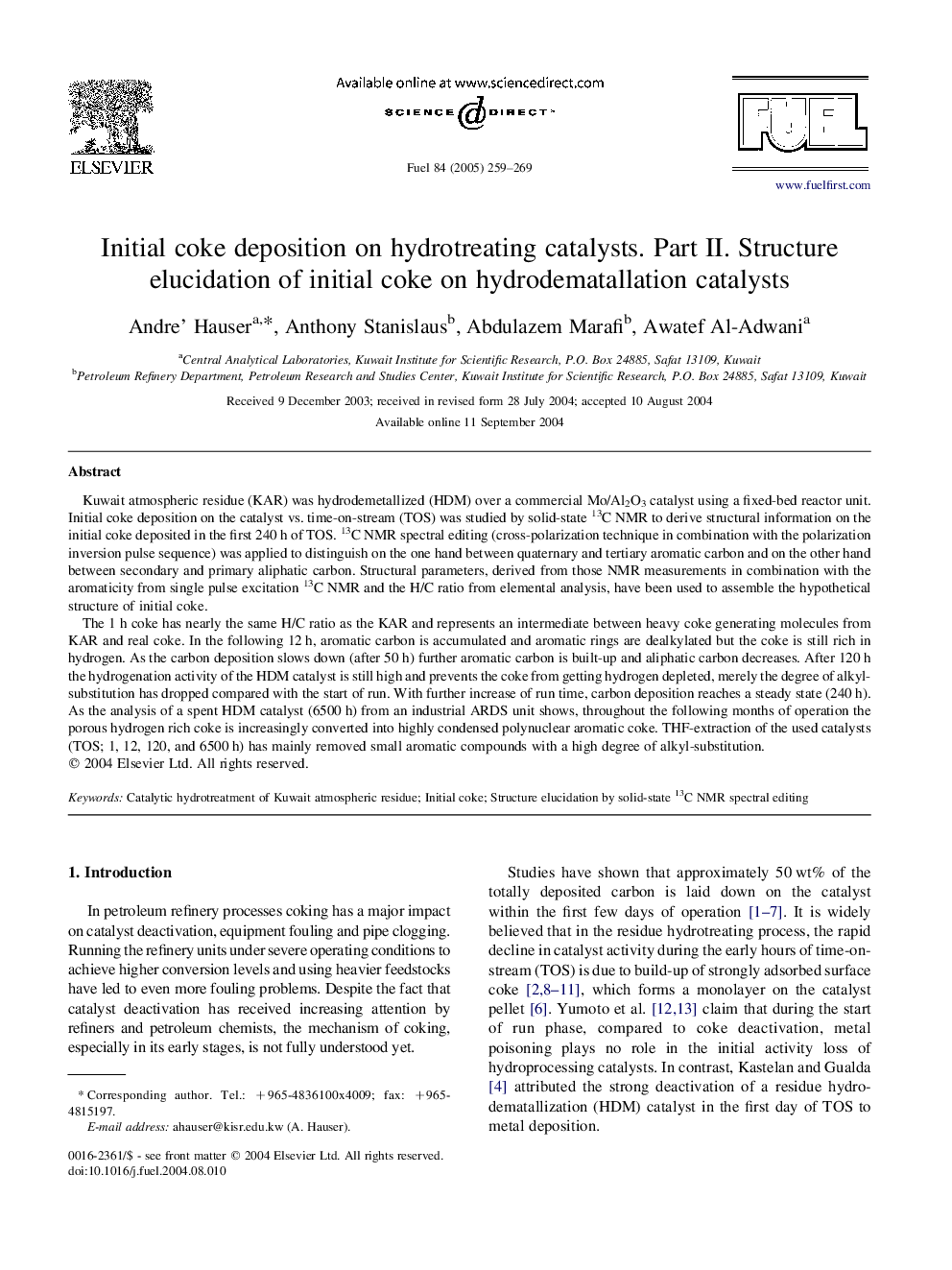| Article ID | Journal | Published Year | Pages | File Type |
|---|---|---|---|---|
| 9629189 | Fuel | 2005 | 11 Pages |
Abstract
The 1Â h coke has nearly the same H/C ratio as the KAR and represents an intermediate between heavy coke generating molecules from KAR and real coke. In the following 12Â h, aromatic carbon is accumulated and aromatic rings are dealkylated but the coke is still rich in hydrogen. As the carbon deposition slows down (after 50Â h) further aromatic carbon is built-up and aliphatic carbon decreases. After 120Â h the hydrogenation activity of the HDM catalyst is still high and prevents the coke from getting hydrogen depleted, merely the degree of alkyl-substitution has dropped compared with the start of run. With further increase of run time, carbon deposition reaches a steady state (240Â h). As the analysis of a spent HDM catalyst (6500Â h) from an industrial ARDS unit shows, throughout the following months of operation the porous hydrogen rich coke is increasingly converted into highly condensed polynuclear aromatic coke. THF-extraction of the used catalysts (TOS; 1, 12, 120, and 6500Â h) has mainly removed small aromatic compounds with a high degree of alkyl-substitution.
Related Topics
Physical Sciences and Engineering
Chemical Engineering
Chemical Engineering (General)
Authors
Andre' Hauser, Anthony Stanislaus, Abdulazem Marafi, Awatef Al-Adwani,
